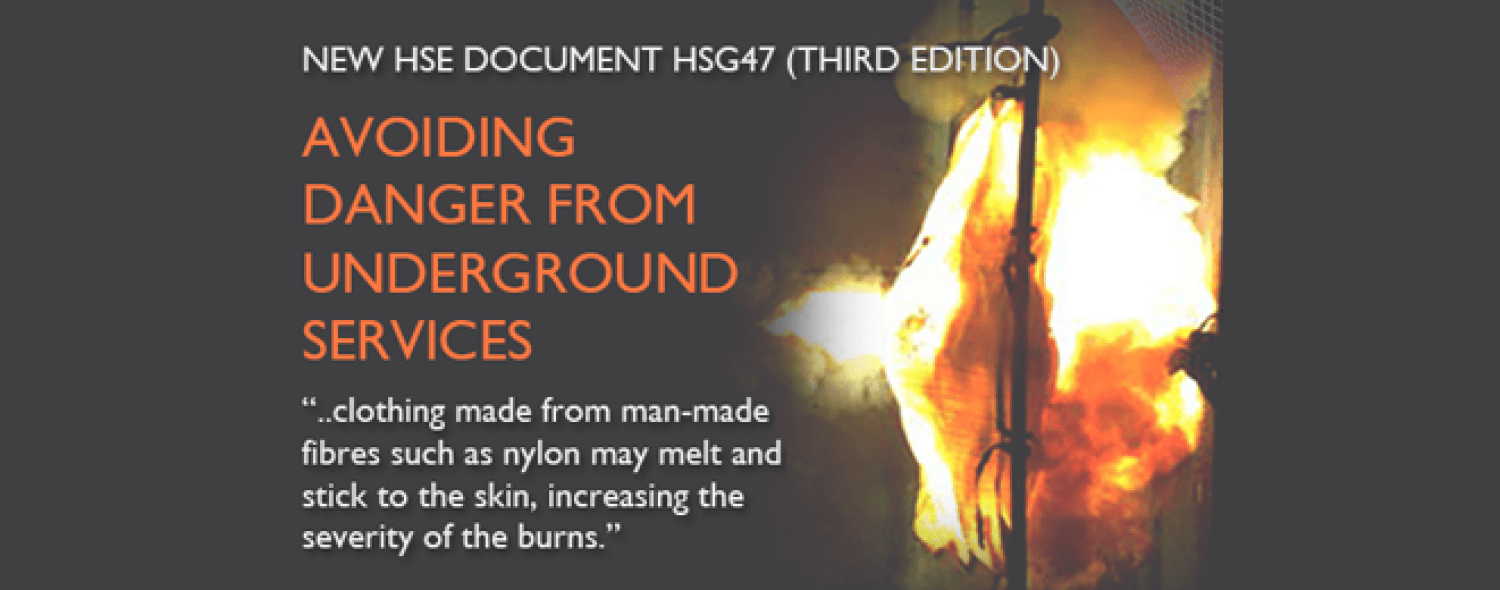
HSE Health & Safety Executive has recently issued the 3rd edition of their guidelines ‘HSG47 Avoiding Danger from Underground Services’. Whilst the basic requirements are still the same, this third edition published in February 2014 brings the guidance up to date from the previously published version 14 years previously in 2000.
The document is freely available from the internet by searching on HSG47_2014 or can be downloaded from our website. Recommendations regarding Protective Clothing against the hazards of Arc Flash Incidents can be found on Page 26 and two extracts are as follows:
“..clothing made from man-made fibres such as nylon may melt and stick to the skin, increasing the severity of the burns.”
“Advice on the suitability and performance of protective clothing should be available from reputable companies specialising in its supply.”
HSG47 (Third Edition) Summary Extract
This guidance is aimed at all those involved in commissioning, planning, managing and carrying out work on or near underground services. It will also be of use to the owners and operators of such services.
It outlines the potential dangers of working near underground services and gives advice on how to reduce any direct risks to people’s health and safety, as well as the indirect risks arising through damage to services.
It explains the three basic elements of a safe system of work during excavation:
- Planning the work
- Locating and identifying buried services
- Safe excavation
This third edition brings the guidance up to date, but the basic requirements remain the same.
N.B. Extract taken from Page 1 of the document
Why ProGARM®?
Many garments within the ProGARM® product range are now certificated to IEC61482 the European Standard for Arc Flash protective clothing and can offer the protection required for your workforce. Garments are tested to either the European Box test method or the US ATPV test method with some garments offering certification to both test methods.
Back